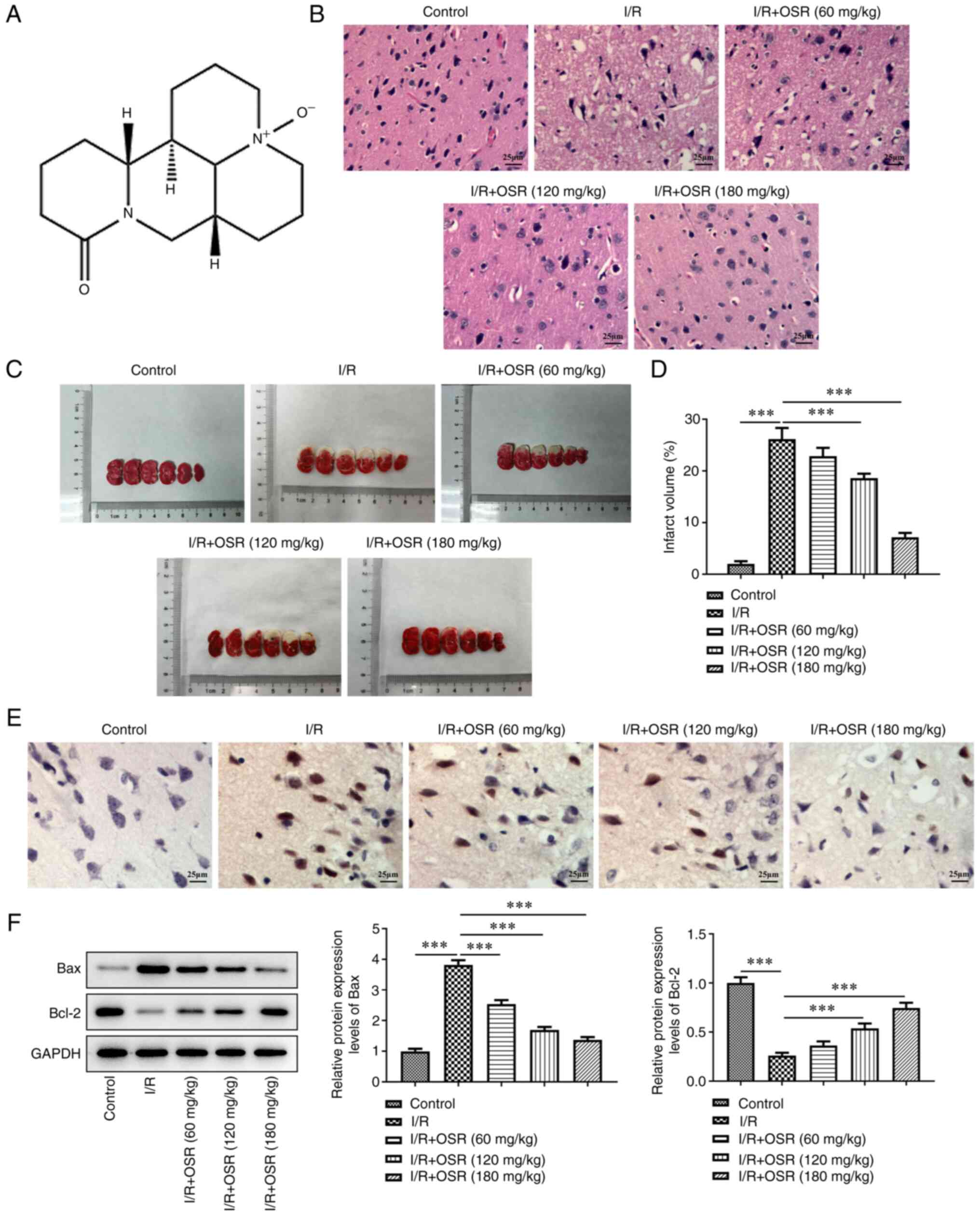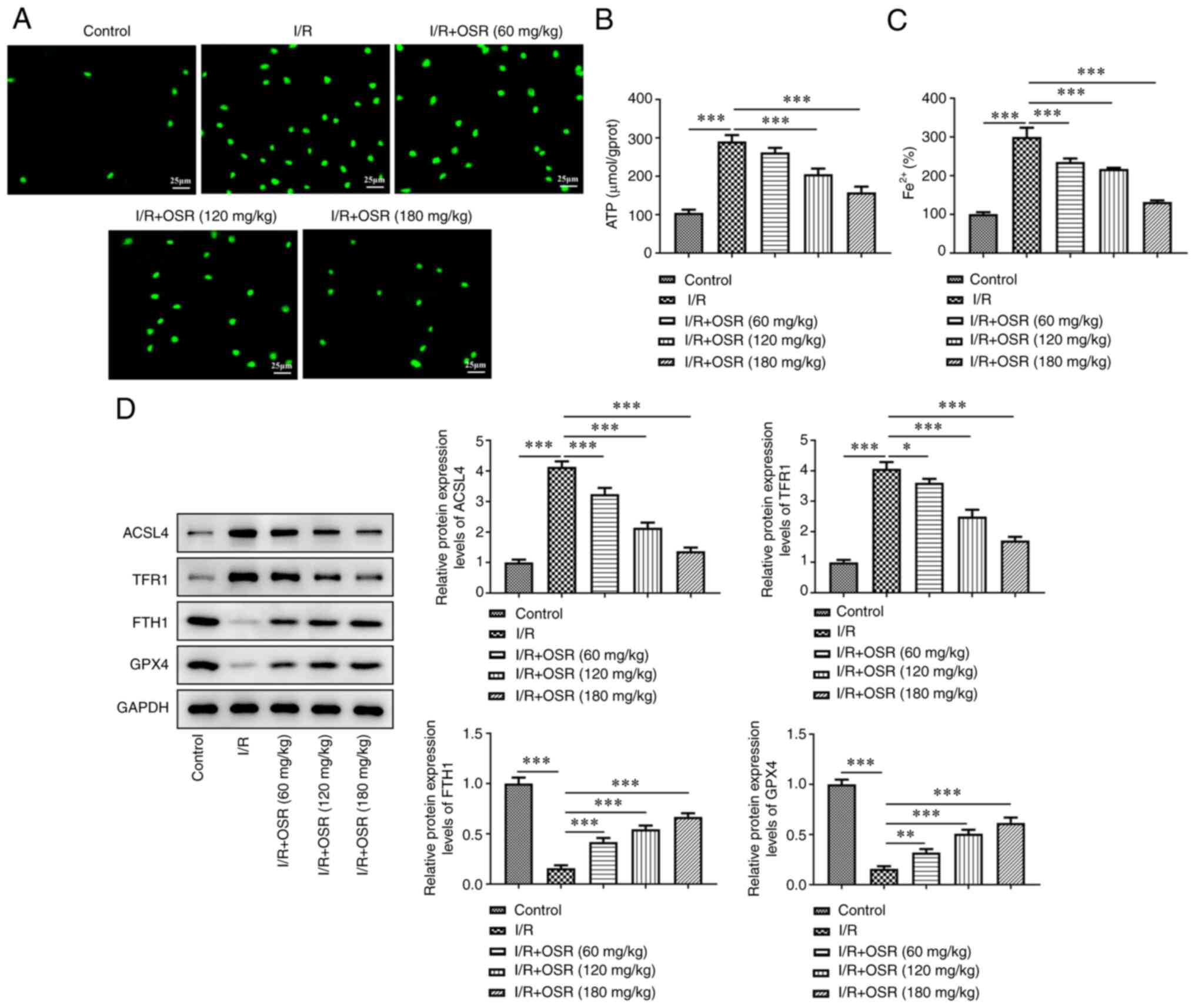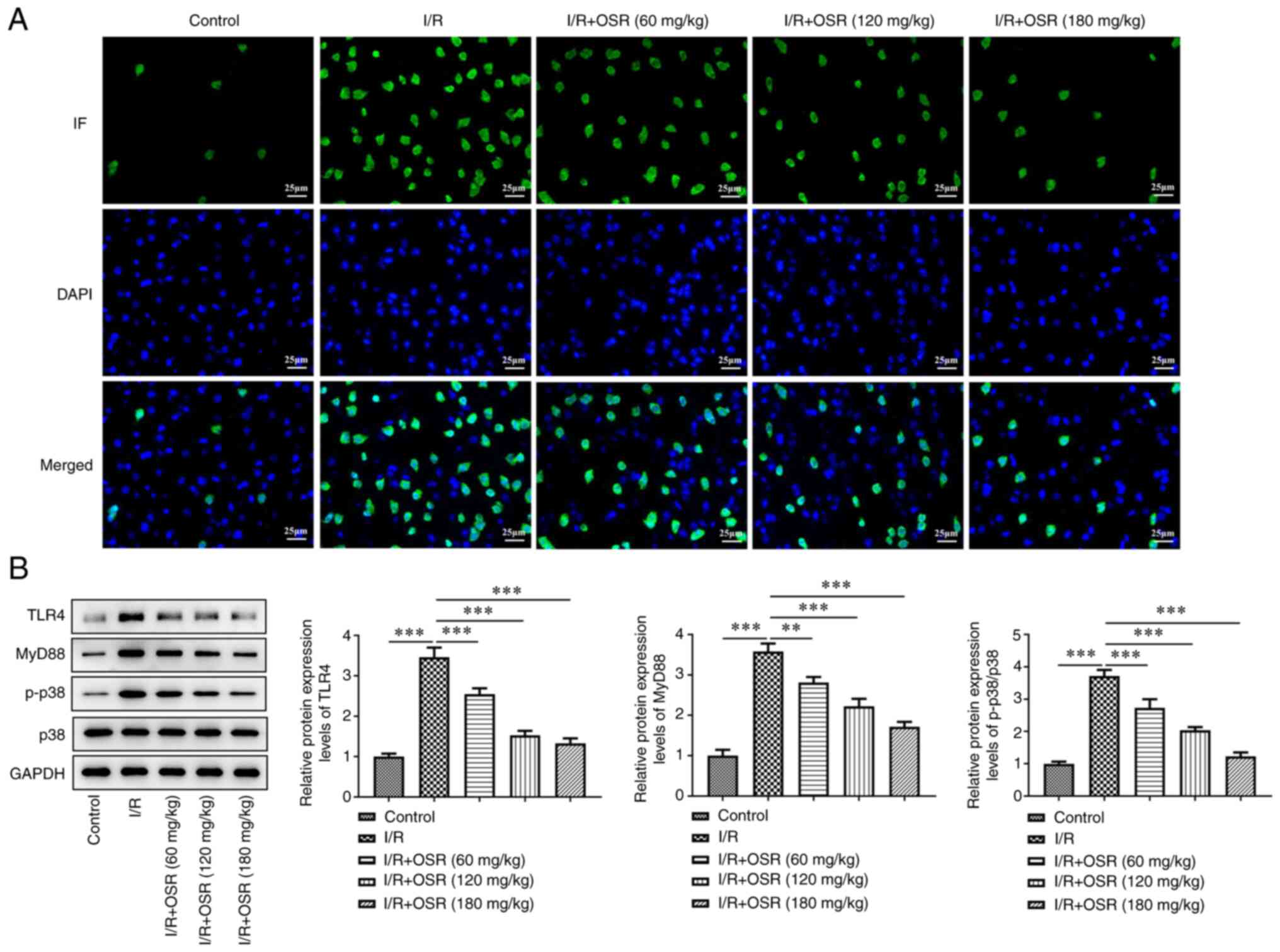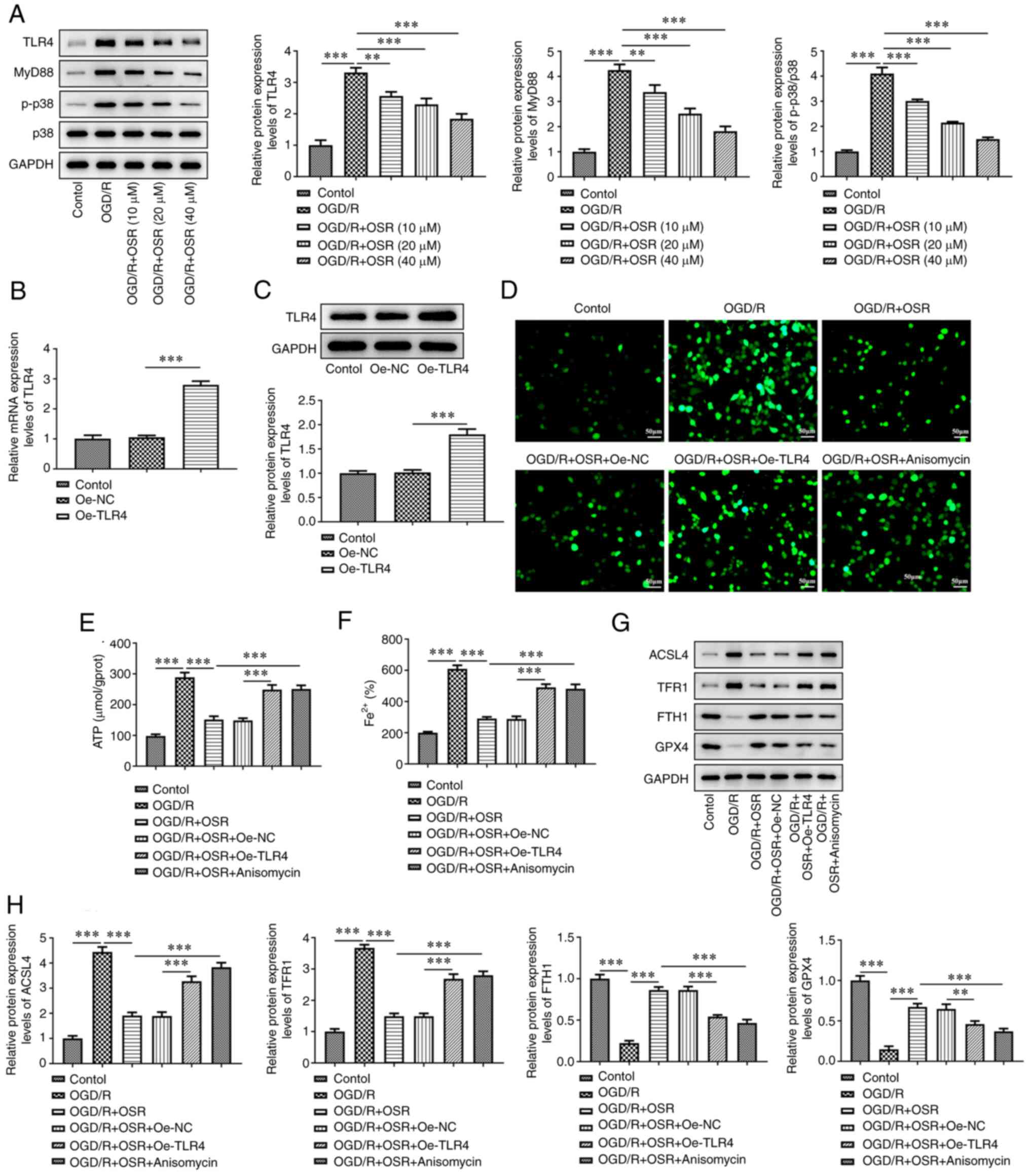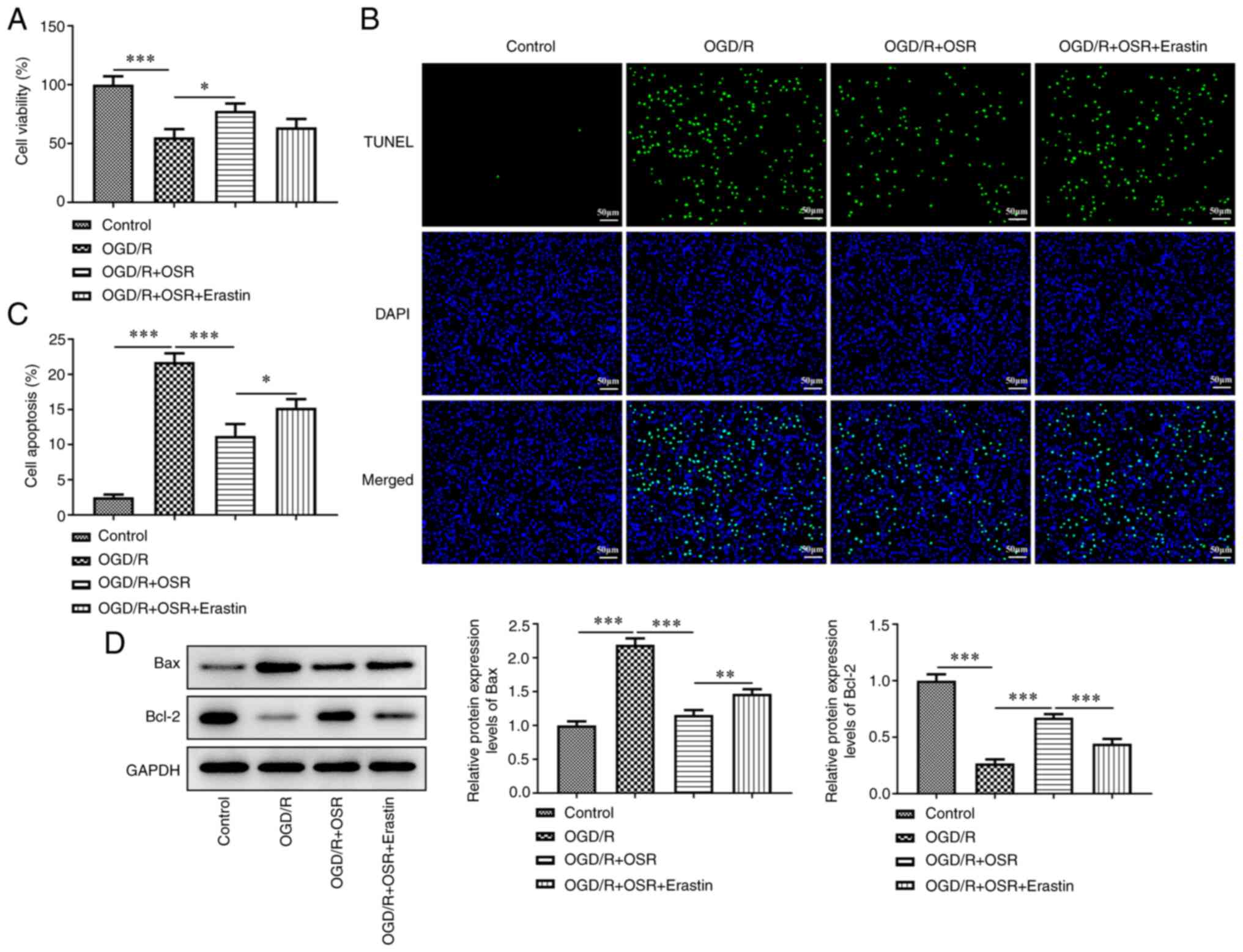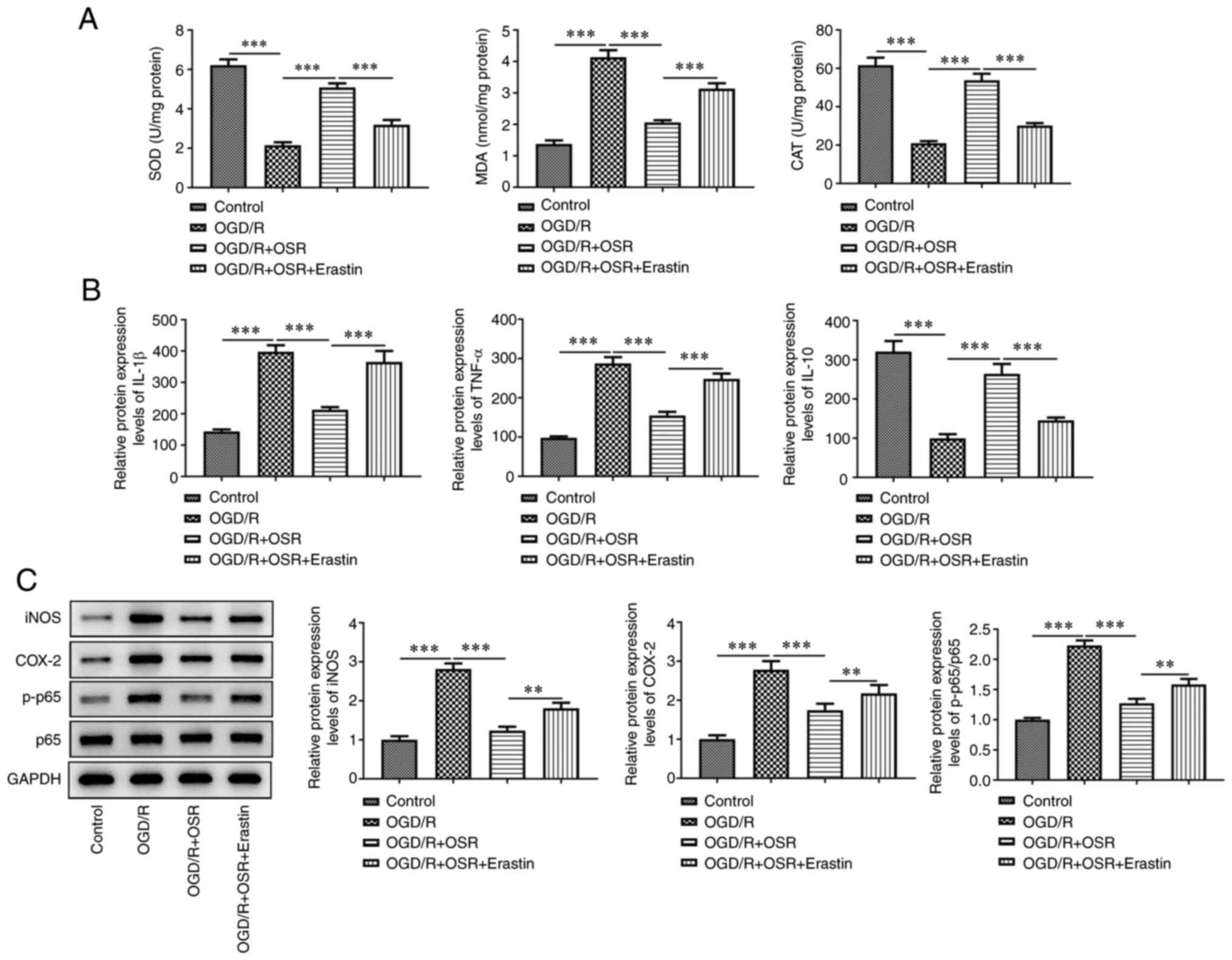|
1
|
Liu W, Wong A, Law AC and Mok VC:
Cerebrovascular disease, amyloid plaques, and dementia. Stroke.
46:1402–1407. 2015. View Article : Google Scholar : PubMed/NCBI
|
|
2
|
Lanzino G and Brown RD Jr: Introduction:
Management of ischemic cerebrovascular disease. Neurosurg Focus.
36:1–2. 2014. View Article : Google Scholar : PubMed/NCBI
|
|
3
|
Wang L, Jia J, Hong Z, Zhang L and Zhang
J: Effects of chemerin and homocysteine levels and their
associations with occurrence and development of ischemic
cerebrovascular disease. Lipids Health Dis. 20:1082021. View Article : Google Scholar : PubMed/NCBI
|
|
4
|
Lu J and Wang DM: Update in endovascular
therapy of ischemic cerebrovascular disease. Zhonghua Wai Ke Za
Zhi. 59:192–195. 2021.(In Chinese). PubMed/NCBI
|
|
5
|
Lim S, Kim TJ, Kim YJ, Kim C, Ko SB and
Kim BS: Senolytic Therapy for cerebral ischemia-reperfusion injury.
Int J Mol Sci. 22:119672021. View Article : Google Scholar : PubMed/NCBI
|
|
6
|
Yang Z, Weian C, Susu H and Hanmin W:
Protective effects of mangiferin on cerebral ischemia-reperfusion
injury and its mechanisms. Eur J Pharmacol. 771:145–151. 2016.
View Article : Google Scholar : PubMed/NCBI
|
|
7
|
Banz Y and Rieben R: Role of complement
and perspectives for intervention in ischemia-reperfusion damage.
Ann Med. 44:205–217. 2012. View Article : Google Scholar : PubMed/NCBI
|
|
8
|
Al-Mufti F, Amuluru K, Roth W, Nuoman R,
El-Ghanem M and Meyers PM: Cerebral ischemic reperfusion injury
following recanalization of large vessel occlusions. Neurosurgery.
82:781–789. 2018. View Article : Google Scholar : PubMed/NCBI
|
|
9
|
Yao XQ, Zhang YH, Long W and Liu PX:
Oxysophoridine suppresses the growth of hepatocellular carcinoma in
mice: In vivo and cDNA microarray studies. Chin J Integr Med.
18:209–213. 2012. View Article : Google Scholar : PubMed/NCBI
|
|
10
|
Wang R, Deng X, Gao Q, Wu X, Han L, Gao X,
Zhao S, Chen W, Zhou R, Li Z and Bai C: Sophora
alopecuroides L.: An ethnopharmacological, phytochemical, and
pharmacological review. J Ethnopharmacol. 248:1121722020.
View Article : Google Scholar : PubMed/NCBI
|
|
11
|
Meng C, Liu C, Liu Y and Wu F:
Oxysophoridine attenuates the injury caused by acute myocardial
infarction in rats through anti-oxidative, anti-inflammatory and
anti-apoptotic pathways. Mol Med Rep. 11:527–532. 2015. View Article : Google Scholar : PubMed/NCBI
|
|
12
|
Cao Z, Chen L, Liu Y and Peng T:
Oxysophoridine rescues spinal cord injury via anti-inflammatory,
anti-oxidative stress and anti-apoptosis effects. Mol Med Rep.
17:2523–2528. 2018.PubMed/NCBI
|
|
13
|
Wang H, Li Y, Jiang N, Chen X, Zhang Y,
Zhang K, Wang T, Hao Y, Ma L, Zhao C, et al: Protective effect of
oxysophoridine on cerebral ischemia/reperfusion injury in mice.
Neural Regen Res. 8:1349–1359. 2013.PubMed/NCBI
|
|
14
|
Zhai Z and Feng J: Left-right asymmetry
influenced the infarct volume and neurological dysfunction
following focal middle cerebral artery occlusion in rats. Brain
Behav. 8:e011662018. View Article : Google Scholar : PubMed/NCBI
|
|
15
|
Livak KJ and Schmittgen TD: Analysis of
relative gene expression data using real-time quantitative PCR and
the 2(−Delta Delta C(T)) method. Methods. 25:402–408. 2001.
View Article : Google Scholar : PubMed/NCBI
|
|
16
|
Mehanna R and Jankovic J: Movement
disorders in cerebrovascular disease. Lancet Neurol. 12:597–608.
2013. View Article : Google Scholar : PubMed/NCBI
|
|
17
|
Sveinsson OA, Kjartansson O and
Valdimarsson EM: Cerebral ischemia/infarction-epidemiology, causes
and symptoms. Laeknabladid. 100:271–279. 2014.(In Icelandic).
PubMed/NCBI
|
|
18
|
Suzuki H, Kanamaru H, Kawakita F, Asada R,
Fujimoto M and Shiba M: Cerebrovascular pathophysiology of delayed
cerebral ischemia after aneurysmal subarachnoid hemorrhage. Histol
Histopathol. 36:143–158. 2021.PubMed/NCBI
|
|
19
|
Qin Y, Zhang Q and Liu Y: Analysis of
knowledge bases and research focuses of cerebral
ischemia-reperfusion from the perspective of mapping knowledge
domain. Brain Res Bull. 156:15–24. 2020. View Article : Google Scholar : PubMed/NCBI
|
|
20
|
Kawadkar M, Mandloi AS, Saxena V,
Tamadaddi C, Sahi C and Dhote VV: Noscapine alleviates cerebral
damage in ischemia-reperfusion injury in rats. Naunyn Schmiedebergs
Arch Pharmacol. 394:669–683. 2021. View Article : Google Scholar : PubMed/NCBI
|
|
21
|
Guan X, Li Z, Zhu S, Cheng M, Ju Y, Ren L,
Yang G and Min D: Galangin attenuated cerebral ischemia-reperfusion
injury by inhibition of ferroptosis through activating the
SLC7A11/GPX4 axis in gerbils. Life Sci. 264:1186602021. View Article : Google Scholar : PubMed/NCBI
|
|
22
|
Wang G, Wang T, Zhang Y, Li F, Yu B and
Kou J: Schizandrin protects against OGD/R-induced neuronal injury
by suppressing autophagy: Involvement of the AMPK/mTOR pathway.
Molecules. 24:36242019. View Article : Google Scholar : PubMed/NCBI
|
|
23
|
Chen R, Wang Z, Zhi Z, Tian J, Zhao Y and
Sun J: Targeting the TLR4/NF-κB pathway in β-amyloid-stimulated
microglial cells: A possible mechanism that oxysophoridine exerts
anti-oxidative and anti-inflammatory effects in an in vitro model
of Alzheimer's disease. Brain Res Bull. 175:150–157. 2021.
View Article : Google Scholar : PubMed/NCBI
|
|
24
|
Rui C, Yuxiang L, Ning J, Ningtian M,
Qingluan Z, Yinju H, Ru Z, Lin M, Tao S and Jianqiang Y:
Anti-apoptotic and neuroprotective effects of oxysophoridine on
cerebral ischemia both in vivo and in vitro. Planta Med.
79:916–923. 2013. View Article : Google Scholar : PubMed/NCBI
|
|
25
|
Wang TF, Lei Z, Li YX, Wang YS, Wang J,
Wang SJ, Hao YJ, Zhou R, Jin SJ, Du J, et al: Oxysophoridine
protects against focal cerebral ischemic injury by inhibiting
oxidative stress and apoptosis in mice. Neurochem Res.
38:2408–2417. 2013. View Article : Google Scholar : PubMed/NCBI
|
|
26
|
Iadecola C and Anrather J: The immunology
of stroke: From mechanisms to translation. Nat Med. 17:796–808.
2011. View
Article : Google Scholar : PubMed/NCBI
|
|
27
|
Liu J, Chen Q, Jian Z, Xiong X, Shao L,
Jin T, Zhu X and Wang L: Daphnetin protects against cerebral
ischemia/reperfusion injury in mice via inhibition of TLR4/NF-κB
signaling pathway. Biomed Res Int. 2016:28160562016. View Article : Google Scholar : PubMed/NCBI
|
|
28
|
Caso JR, Pradillo JM, Hurtado O, Lorenzo
P, Moro MA and Lizasoain I: Toll-like receptor 4 is involved in
brain damage and inflammation after experimental stroke.
Circulation. 115:1599–1608. 2007. View Article : Google Scholar : PubMed/NCBI
|
|
29
|
Zhu K, Zhu X, Sun S, Yang W, Liu S, Tang
Z, Zhang R, Li J, Shen T and Hei M: Inhibition of TLR4 prevents
hippocampal hypoxic-ischemic injury by regulating ferroptosis in
neonatal rats. Exp Neurol. 345:1138282021. View Article : Google Scholar : PubMed/NCBI
|
|
30
|
Stockwell BR, Friedmann Angeli JP, Bayir
H, Bush AI, Conrad M, Dixon SJ, Fulda S, Gascón S, Hatzios SK,
Kagan VE, et al: Ferroptosis: A regulated cell death nexus linking
metabolism, redox biology, and disease. Cell. 171:273–285. 2017.
View Article : Google Scholar : PubMed/NCBI
|
|
31
|
Guan X, Li X, Yang X, Yan J, Shi P, Ba L,
Cao Y and Wang P: The neuroprotective effects of carvacrol on
ischemia/reperfusion-induced hippocampal neuronal impairment by
ferroptosis mitigation. Life Sci. 235:1167952019. View Article : Google Scholar : PubMed/NCBI
|
|
32
|
Guo H, Zhu L, Tang P, Chen D, Li Y, Li J
and Bao C: Carthamin yellow improves cerebral ischemia-reperfusion
injury by attenuating inflammation and ferroptosis in rats. Int J
Mol Med. 47:522021. View Article : Google Scholar : PubMed/NCBI
|















